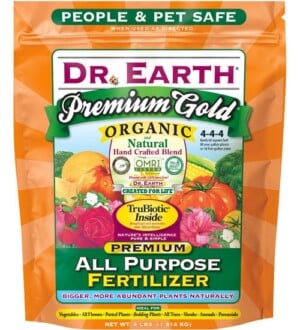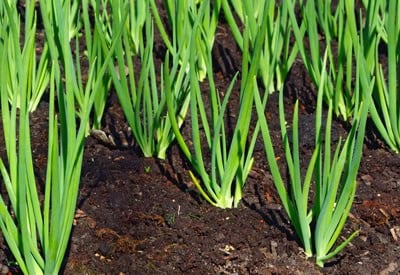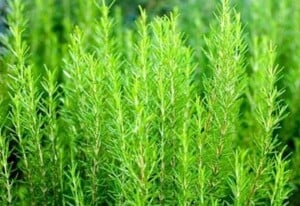Grandpa always said there was no such thing as a lazy gardener. And he was right. But that doesn’t mean there aren’t ways to make gardening easier while still making it effective. No-dig gardening also known as “sheet mulching,” is one of those ways.
Right now, no-dig is all the rage. It was originally popularized in the 1970s when Fukuoka Masanobu, an organic gardener who pioneered ways for growers to be more productive, published his book One Straw Revolution. You can find a good history of no dig vegetable gardening as well as an in-depth how-to, can be found over at Treehugger’s excellent blog.
Sure, the less-work claim makes the no-dig method attractive. And there are a variety of ways to do it. It seems to be successful no matter what type of soil you start with. Proof? Our friends in England report that even starting with heavy clay of the sort so thick that water pools on it, they were able to turn it into viable productive garden soil. They also say that comparisons between no-dig patches and traditionally turned gardens showed the no-dig garden to be as successful and even more so than the dug plots. How is it possible?

IT'S ORGANIC!
All Purpose (4-4-4)
Provides balanced nutrition quickly, yet continues to feed for several months.
Learn moreDr. Earth® All Purpose Fertilizer releases its balanced plant nutrition quickly, yet continues to feed for several months. Promotes healthy growth and bigger, more abundant harvests… NATURALLY! OMRI Listed for use in organic production.
No dig gardening is a method that derives from a simple philosophy: that soil should be worked gently if at all. The reasons for this, as outlined in Tammi Hartung’s new book The Wild-Life Friendly Vegetable Gardener: How To Grow Food In Harmony With Nature (Storey Publishing; more about this book in a later post) revolve around a central principle: “aggressive soil disturbance will cause damage or destruction to the soil community that may take a very long time, sometimes many years, to repair itself, ” writes Ms. Hartung. She recommends that a rototiller be used only in the initial preparation of the garden bed and not again. “Frequent rototilling can damage soil structure that may have taken years to develop and that is essential for good drainage.” She also wants to avoid disturbing the healthy soil community of beneficial microorganism and creatures that live in the soil.
With the no-dig method, she doesn’t have to use a rototiller at all.
There are a number of ways to proceed (scroll down for seven of them) when beginning a no-dig plot on a previously un-gardened patch of land or lawn. Usually these methods require that you start in fall. But they don’t have to. Our experience with the process includes starting a larger patch in the fall from a weed-infested abandoned patch of garden that had been compacted. The other was done inside a small space, roughly six-by-four feet, that we started in the spring and planted as soon as we could. Let’s look at the fall-started patch first as a way to understand the basics.
Simply, what you’re trying to do when starting a no-dig patch is smoother what’s already growing there while introducing organic matter to the soil. Start by choosing using the same principles you’d use to choose any garden space: hours of sunlight (at least six per day, more is better) drainage, slope, those kinds of things. Then stake off the place where the garden will go. We favor framing in smaller, manageable spaces with raised-bed like boxes.
If you have compost to spare, spread a thick layer over what’s already growing there, then cover with damp newspaper or cardboard (the moisture encourages the decomposition process). Mulch heavily on top of the cardboard. Leaves, abundant in the fall, make a good mulch. They should also be watered, not only to speed decomposition but to help keep them in place. The cardboard will smother grass and weeds while slowly decomposing, releasing the decaying mulch and compost into the site. Let it sit through the winter.
In the spring, you have some choices, depending on how much the smothering and decomposition process has gone. If you started early enough in the fall (and waited long enough into the spring), your soil may be mostly bare when the mulch and paper is pulled aside. Let it lay fallow for a couple days to allow remaining weed seed to sprout — then pull them — and to let slugs migrate into the area where they can be trapped or picked by hand. Most likely, your topsoil will still be evolving when you pull back the mulch.

At this point you can spread top soil or compost, if you have it, on the mulch and begin planting by digging out spots for transplants and adding more topsoil or compost. Do the same with patches started in spring. For starting your no-dig organic garden in the spring, follow the same procedure: lay down wet newspaper or cardboard, then cover with mulch and/or compost. Give it a week or two before you dig out spots for your transplants.
You can grow row crops directly from seed by importing enough topsoil to give the seeds an inch or so to grow in. By the second year, you won’t need to add any top soil at all. You will have created it, and it will be waiting for you under the mulch.

FREE SHIPPING!
Garden Seeds
All heirloom seeds offered by Planet Natural are non-treated and non-GMO.
View allAll heirloom vegetable seeds — not the sort you’ll find in box stores — offered by Planet Natural are non-treated, non-GMO and NOT purchased from Monsanto-owned Seminis. Planting instructions are included with each packet and shipping is FREE! Need advice? Visit our vegetable guides for tips and information on growing specific types.
Always keep your new garden plot mulched and be sure to pull any weeds or grasses that poke through. We’ll let you decide if, when starting your new patch, you want to go along the edges with a sharp spade and sever any roots that run into the garden. Yes, this qualifies as digging but then it’s easier than turning over the whole plot with a fork.
Your no-dig veggies may require more water than you might normally use. Watering not only keeps the plants healthy but helps the decomposition process. And you should pair an aggressive composting program with your new plot. No-dig works best and most quickly when you have availability to compost as well as mulch.
New no-dig spots also require more amending. We like to use fish emulsions when we water to make sure our plants are getting the macro and micro-nutrients they need.
Planting in straw bales is a no-dig technique. As the straw bales break down, they enrich the soil beneath it. And they encourage organisms like beneficial microbes and earthworms to congregate below the bales, just as the mulch in a no-dig plot does.
In fact, what you’re doing when employing a no-dig approach is turning your entire garden patch into a compost heap. While the results come more slowly than they would in your bins or (especially) compost tumblers, you soil is always being enriched by the decomposition that is going on. You’re not only enjoying the benefits of continual composting, but those of mulching — water retention, weed control, etc. — as well.
Anyone out there have experience with no-dig methods? We’re guessing that the ways to do it are as various as the different gardeners that try it. Share your methods with all of us, either here, at Facebook, or both.











